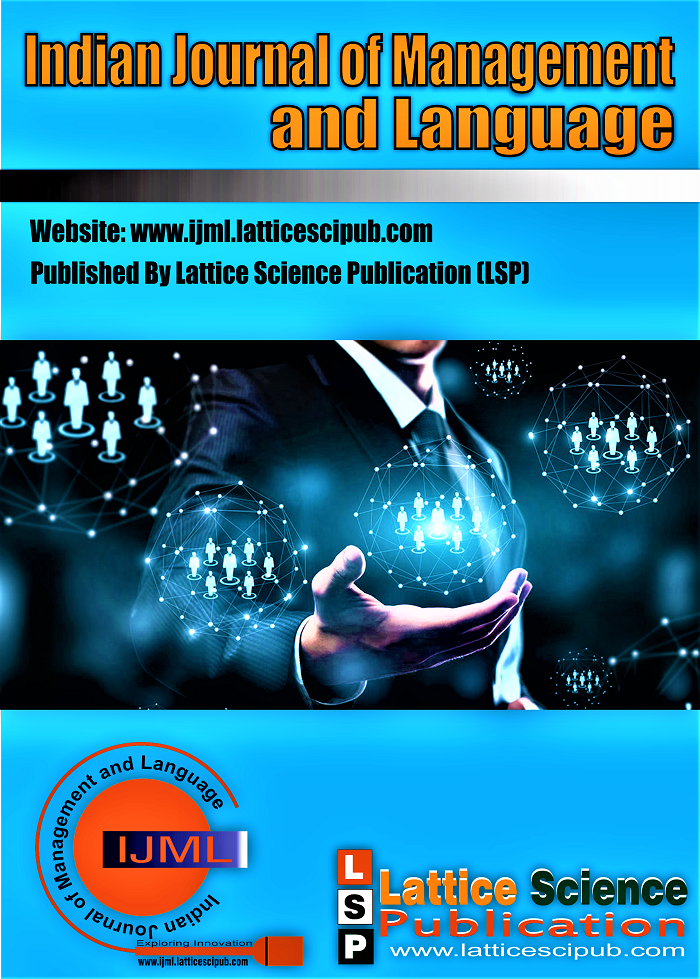Post-Colonial Review of V. S. Naipaul’s Fiction
Main Article Content
Abstract
V.S Naipaul is acknowledged as one of the most talented writers dealing with postcolonial themes for his fictions. As a Nobel Prize winner author, he has written a number of fictions such as A House for Mr Biswas (1961), A Bend in the River (1979), Miguel Street (1959), An Area of Darkness (1964), In a Free State (1971), The Mimic Men (1967), India: A Million Mutinies Now (1990) and so on. The article presents a review of his postcolonial fictions with a thorough thematic analysis. Naipaul treats the themes of pessimism, identity crisis, social fragmentation, diaspora and internal struggles of immigrants. He also presents the futility of designing a new Westernised identity by discarding old roots. The political, social and cultural upheavals and its critical impact is also illustrated by the author.
Downloads
Article Details

This work is licensed under a Creative Commons Attribution-NonCommercial-NoDerivatives 4.0 International License.
How to Cite
References
Allouche, J. (2019). State building, nation making and post-colonial
hydropolitics in India and Israel: Visible and hidden forms of violence
at multiple scales. Political Geography, 75,
https://doi.org/10.1016/j.polgeo.2019.102051 [CrossRef]
Babakir, K. K. (2021). Unhomeliness in VS Naipaul’s A House for Mr.
Biswas. Journal of Kurdistani for Strategic Studies,
(10).https://doi.org/10.54809/jkss.vi10.31 [CrossRef]
Balfour, R. (2007). VS Naipaul's Half a life, Magic seeds and
globalisation. Literator: Journal of Literary Criticism, Comparative
Linguistics and Literary Studies, 28(1), 1-
https://hdl.handle.net/10520/EJC61954 [CrossRef]
Bannerji, H. (2020). Beyond the ruling category to what actually
happens: Notes on James Mill’s historiography in The History of
British India. In The Ideological Condition: Selected Essays on
History, Race and Gender (pp. 134-149).
Brill.https://doi.org/10.1163/9789004441620_009 [CrossRef]
Biswas, P. M. (2020). Salman Rushdie as Diasporic Myth-Maker:
Myth and Memory in Midnight’s Children. Journal of Comparative
Literature and Aesthetics Vol, 43(1), 95-108.http://jcla.in/wp
content/uploads/2020/11/JCLA-Vol.-43.1-Spring-2020_Pooja-Mittal- Biswas.pdf
Chan, C. S. (2022). Culture and identity. In Hong Kong History (pp. 157-180). Palgrave Macmillan, Singapore.https://doi.org/10.1007/978- 981-16-2806-1_7 [CrossRef]
Economictimes.indiatimes.com, (2019). Tagore, Satyarthi And 8 Other Nobel Winners Who Have Made India Proud.https://economictimes.indiatimes.com/magazines/panache/tagor e-satyarthi-and-8-other-nobel-prize-winners-who-made-india- proud/sir-vidiadhar-surajprasad-naipaul/slideshow/71629048.cms
Gökçen, K. A. R. A. (2021). A Postcolonial Analysis of a Bend in the River by VS Naipaul. Tarih veGelecekDergisi, 7(1), 401- 413.https://dergipark.org.tr/en/download/article-file/1644006]
Gustafsson, K., &Krickel-Choi, N. C. (2020). Returning to the roots of ontological security: insights from the existentialist anxiety literature. European Journal of International Relations, 26(3), 875- 895.https://doi.org/10.1177%2F1354066120927073 [CrossRef]
Harris, S. (2020). “The Other Side of Imperialism”: The Comic Monologue in Angela Carter’s Late Fiction. Contemporary Women's Writing, 14(2-3), 333-349.https://doi.org/10.1093/cww/vpaa027 [CrossRef]
Ilyas, M. (2018). Expatriate Experience and the Fictional World of Diaspora. Journal of Social Studies Education Research, 9(1), 106- 123.https://dergipark.org.tr/en/download/article-file/496793
Jiménez, M. F. (2022). Inscribing Indian Indentureship in the Creolised Caribbean: The Homing Desire in VS Naipaul’s A House For Mr. Biswas. Indialogs, 9, 25-41.https://doi.org/10.5565/rev/indialogs.204 [CrossRef]
Mondal, T. K. (2019). Mapping India since 1767: transformation from colonial to postcolonial image. Miscellanea Geographica, 23(4), 210- 214.https://doi.org/10.2478/mgrsd-2019-002 [CrossRef]
Newindiaexpress.com, (2018). VS Naipaul: The laureate of postcolonial lament.
https://www.newindianexpress.com/nation/2018/aug/13/vs-naipaul- the-laureate-of-postcolonial-lament-1856992.html
Saini, R., & Begum, N. (2020). Demarcation and definition: Explicating the meaning and scope of ‘decolonisation’in the social and political sciences. The Political Quarterly, 91(1), 217- 221.https://doi.org/10.1111/1467-923X.12797 [CrossRef]
Shunmugapriya, S., & Thamizhmani, M. (2018). Identity Crisis in VS Naipaul’sa House for Mr. Biswas and the Mimic Men. ICON (Integrating Concepts), 3(4), 22.http://www.rjelal.com/7.1.19/235- 237%20S.SHUNMUGAPRIYA.pdf
Zilberstein, G., Zilberstein, S., & Righetti, P. G. (2020). Stalin’s “black dog”: a postmortem diagnosis. Analytical and Bioanalytical Chemistry, 412(28), 7701-7708.https://doi.org/10.1007/s00216-020- 02914-z [CrossRef]





